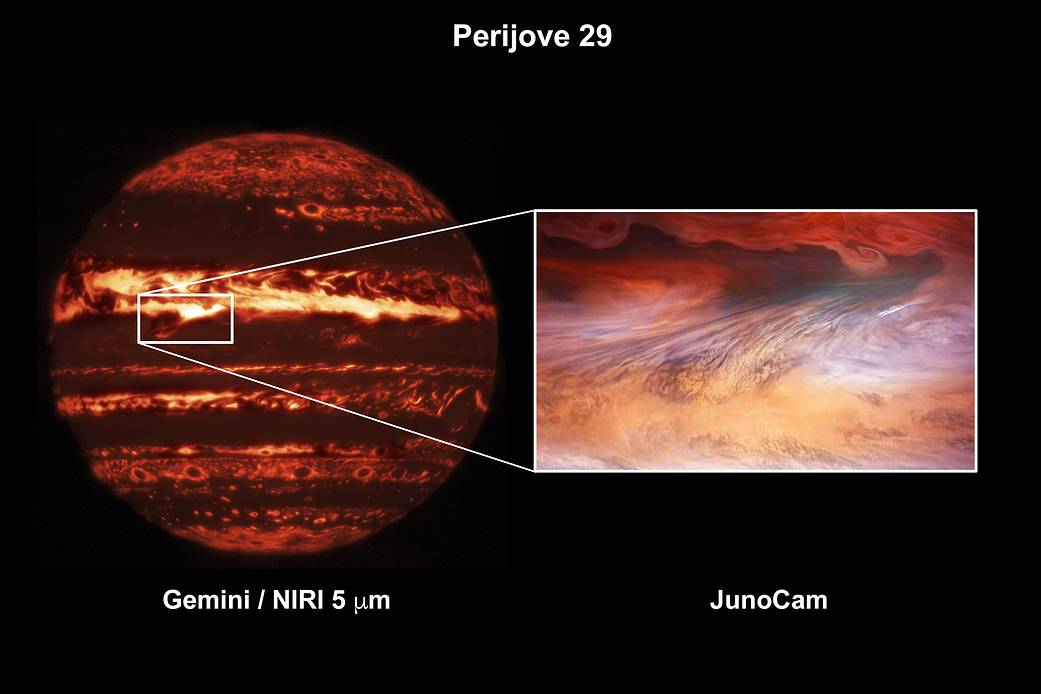This composite image shows a hot spot in Jupiter’s atmosphere. In the image on the left, taken on Sept. 16, 2020 by the Gemini North Telescope, the hot spot appears bright in the infrared at a wavelength of 5 microns. The inset image on the right was taken by the JunoCam visible-light imager aboard NASA’s Juno spacecraft, also on Sept. 16, during Juno’s 29th close pass by Jupiter. Here, the hot spot appears dark.
Jupiter’s hot spots have been known for a long time. On Dec. 7, 1995, the Galileo probe likely descended into a similar hot spot. To the naked eye, Jupiter’s hot spots appear as dark, cloud-free areas in the planet’s equatorial belt, but at infrared wavelengths they are extremely bright, revealing the warm, deep atmosphere below the clouds.
High resolution images of Jupiter’s hot spots such as these are key to understanding the role of storms and waves in Jupiter’s atmosphere and to solving the mystery of Jupiter’s elusive water.
Citizen scientist Brian Swift processed the images to enhance the color and contrast, with further processing by Tom Momary to map the JunoCam image to the Gemini data.
The international Gemini North Telescope is a 26.6 foot (8.1 meter) diameter optical/infrared telescope optimized for infrared observations, and is managed for the NSF by the Association of Universities for Research in Astronomy (AURA).
JunoCam’s raw images are available for the public to peruse and process into image products at https://missionjuno.swri.edu/junocam/processing. More information about NASA citizen science can be found at https://science.nasa.gov/citizenscience and https://www.nasa.gov/solve/opportunities/citizenscience.
More information about Juno is at https://www.nasa.gov/juno and https://missionjuno.swri.edu.
Gemini image: International Gemini Observatory/NOIRLab/NSF/AURA M.H. Wong (UC Berkeley)JunoCam image: NASA/JPL-Caltech/SwRI/MSSS/ Brian Swift © CC BY / Tom Momary © CC BY



























